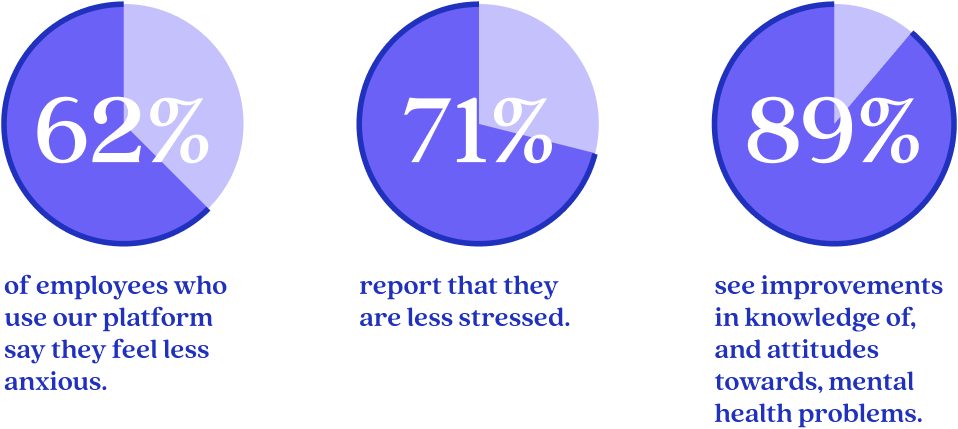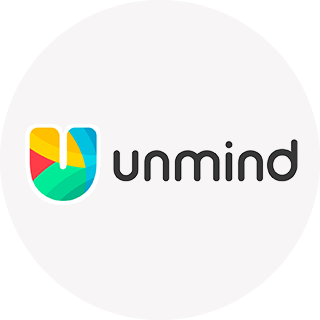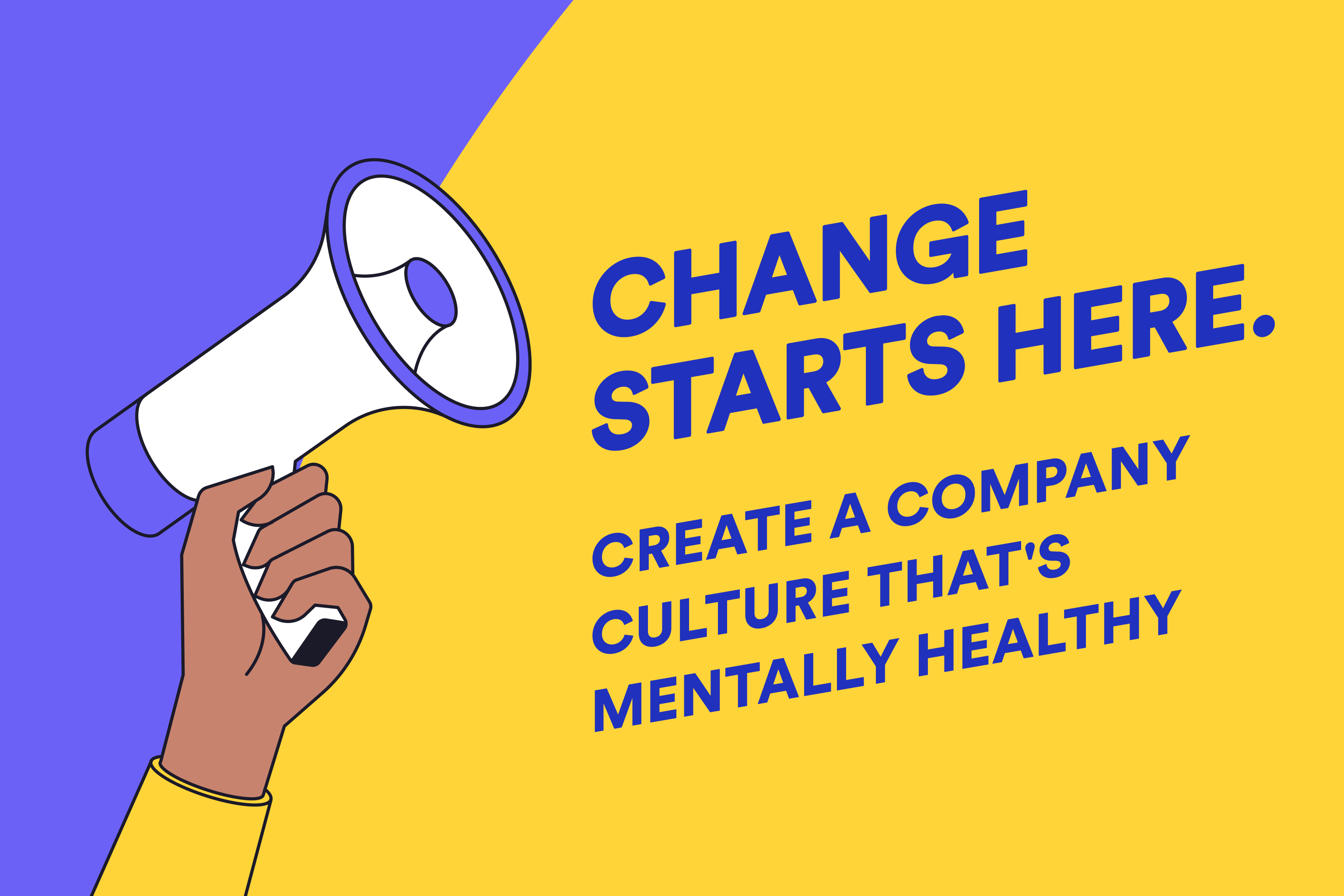During the COVID-19 pandemic, people spent a lot of time isolated and indoors, which helped foster an environment where some people now feel lonelier than ever. The result is a loss of social connectedness—the degree to which people feel the social connections and relationships in their lives to satisfy their wants and needs. When social…
Your Welcoa membership has expired.
Change You Can Feel: How Leaders Can Drive a Mentally Healthy Culture
The past few years have been dizzying. At the core of it all? Change.
Global events have altered how we deal with racial injustice, social interactions, the cost of living, war and more. One day soon, the climate emergency will force an urgent review of how we live. Just like Covid-19 redrew our relationship with work.
Through all this turbulence we can at least be thankful for one more change: people have woken up to mental health. And everybody’s talking about it. Not least the business and people leaders championing change in workplace wellbeing.
Proactively helping employees to understand and improve their own minds makes human and economic sense.
But awareness, unless matched with the right action, is not enough. While recent advances (like messaging campaigns, or hybrid working) have helped, we’re all still confused and overwhelmed. Modern life is relentless.
So, for an impact that both matters and lasts, the onus to manage employee mental health can’t fall on staff alone. Wellbeing must be measured on an individual and organizational level. And it’s the duty of companies, and their leaders, to help set the tone.
To drive real change, we must look beyond small-time or patchwork solutions.
This time, it’s cultural.
The case for cultural change, and why we need to act now.
As proof goes, Microsoft’s 2021 Work Trend Index – a snapshot of 30,000+ staff in 31 countries – is pretty concrete. It revealed that:
Elsewhere, Gallup’s State of the Workplace survey showed record rates of worry, anger, sadness and stress. Around 7 in 10 employees admit they are struggling. And 4 in 5 are either not engaged, or actively disengaged, at work.
Beyond the scary human toll – a toxic stew of too much work and not enough rest seems to infect every modern workplace – this stuff plays out in numbers, too.
In fact, lost productivity costs the global economy an annual $8.1 trillion. Or roughly 10% of Earth’s GDP. It’s a stat that’s both unfathomable and alarming, and implies that, for many, work just isn’t working.
The Great Admission
But you knew this already. It’s what brought you here. It’s why talk of a Great Resignation – over-egged or not – won’t go away. And it’s the reason Covid-spiked wellbeing spend is also staying put.
(Today’s wellbeing market is worth $61 billion, and has grown 11% since 2020. Not only that, a survey by Aon found 96% of firms plan to maintain or increase mental health investment, post-pandemic.)
So, everyone’s talking about workplace mental health. Business leaders believe, and they’ve backed it up with budget. More and more, workmates sharing mental health challenges is becoming the norm. And as Covid fast-tracked the trend of companies offering access to personal wellbeing apps, the tools for support are just two taps away.
‘The Great Admission’ is upon us. So why is workplace wellbeing still a problem?
Strategies that just target individuals are no longer enough
Right now, mental health-related absence stands at a whopping $1 trillion a year.
And according to the WHO, global rates of depression and anxiety increased by a quarter during the pandemic.
What does this tell us? Forget dizzying – for many, the past few years have been excruciating. Yet the above data comes at a time of supercharged wellbeing awareness and spend. This says something too:
More staff than ever can access wellbeing tools. But it’s not enough.
Why?
You can’t just log in to a healthy mind.
Life is messy. Individuals are individual. What works for one person might not for another.
This is why organizations must go further. There is no single, store-bought fix to deliver a booming business, or flourishing staff. In a world of box-ticking wellbeing solutions, EAPs are a box-tick. They’re needed, yes. But we now know they are merely a start-point.
Put another way: awareness and investment is a great first step, but access doesn’t equal empowerment.
For change – real change, lasting change – you need more. You need people.
What an effective mental health culture looks like.
When organizations make a mental health culture their goal – focusing on work systems, structures, and staff in a top-down, whole-company way – that’s where real change happens. As well as (who knew!) a whole heap of benefits.
According to the Josh Bersin Company, organizations that approach wellbeing in this way are:

You’ll notice these are a healthy mix of business and employee wins. That’s no fluke. Companies with a mental health culture rarely face a people or profits problem.
There’s no choice to make – they’re the same thing.
The future of business – or successful organizations, at least – is sustainable growth.
And that applies to the planet and its people alike.
Comprehensive, joined-up strategy
What does this look like IRL? Well, without wishing to overdo it, it’s a wellbeing strategy so joined-up and comprehensive that you can see it from space. This will include:
Whole-person support: Employees are people. They have thoughts and emotions, brains and bodies, relationships (in work, at home), and cultures that shape who they are.
Again, you know this, but just listing the above goes some way to explaining why ‘empowering’ an employee with a meditation app doesn’t instantly spark a rolling state of mental health.
Sure, mindfulness may boost an individual’s sense of calm or coping, but the glue that binds balance, long-term happiness and company performance comes when you care for 100% of a person. So, sleep as well as stress. Connection and fulfilment. Health in the broadest sense (physical, mental, emotional).
A whole-organization approach: Mental health isn’t a perk – it’s a mindset.
To make (and feel) real change, your whole organization has to buy-in.
Because whole-person support for employees is worth zero if this ethos doesn’t spread firm-wide. Staff need to feel confident they can speak up when facing a challenge (whether it’s to do with their work, their boss, their mental health, or their personal life), and feel safe that their employer has their back, no matter what.
The whole-organization approach is a proactive way to cement these fundamentals.
Proactive care: In the past, wellbeing support was largely powered by EAPs and occupational health. And, while expert support that snaps into gear – or reacts – once someone is in distress is still vital (especially for the 1 in 5 people who experience mental illness each year), a proactive culture seeks to support staff before a problem starts.
This means helping employees to understand, measure and manage their own minds – though it isn’t just that. Companies have a role to play (in leadership, training, support, culture) to make reactive measures a break-glass option, not the first line of defense.
In digits: research shows a proactive approach nets an ROI of $4 for every dollar spent.
Prevention: Much like proactive steps, prevention is about squashing risks ahead of time. On a personal front, this could be frequent health checks, or solid mental hygiene (e.g. self-care, or guard rails to ward off overwork and burnout), but exists on a company-wide level too.
For instance, ISO 45003, published last year and created by a bunch of experts, brings traditional health and safety (with its strong focus on physical hazards) up to date – working towards a world that is psychologically safe.
Covering everything from the obvious (harassment, violence, bullying) to the seemingly insignificant (bad lighting, unclear communication, a disconnect between effort and reward), the standard is an A+ starting point for companies that want to pivot towards prevention. Long term, it’s an organizational toolkit for a future-proofed, mental health culture.
How to make change happen at your organization.
Enough talk – it’s time for change. Want to deliver a new culture at your company?
This is how.
1. Upskill your agents of change
To lead teams effectively, today’s managers need as much empathy, confidence and emotional intelligence as they do talent.
A recent Prudential Financial study showed it – 44% of managers whose direct reports are working remotely said the hybrid model has left them burnt out, and six in 10 managers say their mental health has been hurt by the pandemic. Another study from Owl Labs found 36% of managers leading remote teams said they were concerned over employee productivity, and the same number (36%) were concerned about a lack of focus.
Organizations now expect managers to support hybrid teams, smash targets, prevent staff burnout, and nurture employee mental health. Meanwhile, staff are looking to leadership for direction, yet managers aren’t equipped.
The answer? Evidence-based, wellbeing-centered training. When you consider that managers interact with more staff on a given day than any head of HR or CEO, learning ranks among the most important, and effective, start-points for cultural change.
Educating managers can swiftly lift your cultural tide, company-wide. Doing so allows leaders to boost their own wellbeing, while arming them with the insight to better recognize and understand common mental health problems, plus how to support staff experiencing them.
It means managers can normalize wellbeing conversations among workmates, or role model healthy behavior (e.g. resisting the urge to send late-night emails, or being open around their own wellbeing), from a place of knowledge, not well-intentioned guesswork.
In short, crafting a new workplace culture starts with managers.
2. Measure it. Manage it
Want to proactively look for workplace wellbeing patterns? Consider data your superpower. From engagement to productivity, and even the warning signs for burnout, this info helps organizations understand the wants and needs of their employees – taking cultural change from the realm of fantasy, and parking it squarely in reality.
By measuring the impact of your mental health and wellbeing initiatives, you can pinpoint what’s working and what’s not, and fine-tune your strategy.
Put simply, this allows you to do more of what works, and less of what doesn’t.
Most importantly, a data-driven approach allows you to listen, and shows staff they’re being listened to. It’s proof that psychological safety – and all-round employee wellbeing – is a key organizational metric, and not solely a side-effect of higher profits.
Last, by matching radical transparency over the data you collect with watertight privacy, it’s possible to deliver better outcomes for employees, while also boosting trust and loyalty.
3. Unite behind change
A new working order is in reach. The organizations that change their culture today can lead others toward a positive, mentally healthy environment.
Get started early by turning cultural change into a community. Start with your own experts, then build a network by connecting with like-minded professionals and companies.
Listen to other people’s experiences. Learn and share best practice. Find strength through vulnerability – sharing your company’s cultural journey, on webinars and at events – and cement your organization as the sector leader for psychological safety.
In-house, you’ll know your culture is complete when employees don’t just want to stay, develop and progress alongside you, but become vocal champions to attract new talent who can further add to, and improve, your culture.
4. Empower your people to flourish
By giving employees the tools to manage and improve their own wellbeing, while also rethinking the workplace approach – from reactive to proactive, and swapping outdated health and safety regs for an environment free of psychosocial hazards – you set the stage for lasting change.
For instance, take Unmind:

The message is clear: remove workplace barriers, and give employees the opportunity to understand and improve their own minds, and they’ll discover the real solution.
That is, when they harness their own mental health and wellbeing, this delivers change they can feel.
For themselves. Their loved ones. Their workmates. And you.
But don’t forget, this isn’t a one-stop or one-size solution. Driving cultural change is complex, and bloody hard. You’ll need some apps in your offering, sure, though also bottom-up initiatives like wellbeing champions, a top-down inquiry to deliver psychological safety (ISO 45003 and that), loads of training, and a community that helps stitch together – and feed – your new culture.
Access Unmind’s Free Handbook:
Change You can Feel

Unmind
Unmind is a workplace mental health platform. We empower employees to measure, understand, and improve their mental wellbeing while giving organizations actionable insights to inform their wellbeing strategies. Working in collaboration with clinicians, authors, and academics, we provide digital tools that nourish all aspects of mental wellbeing. From sleep to calmness, fulfillment to happiness. Take a look at our brochure to find out more about the platform.
Unmind was a 2022 WELCOA Summit Sponsor and are a proud partner of the WELCOA Premier Provider Network. To learn more visit their Vendor Profile.




